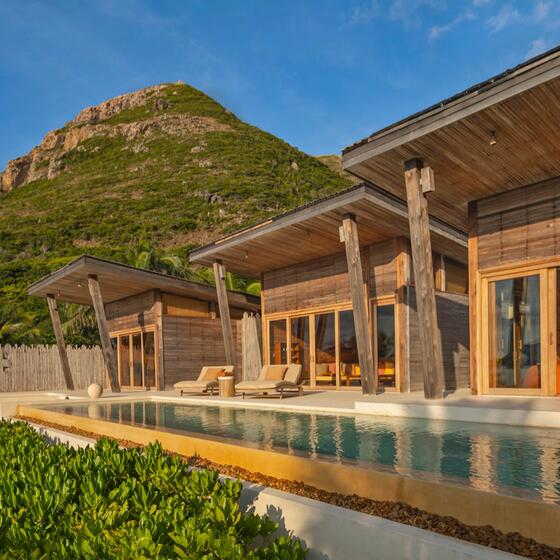Head to Rome’s latest haven of contemporary wellness and good living for a luxury Italian spa break
31 October, 2023
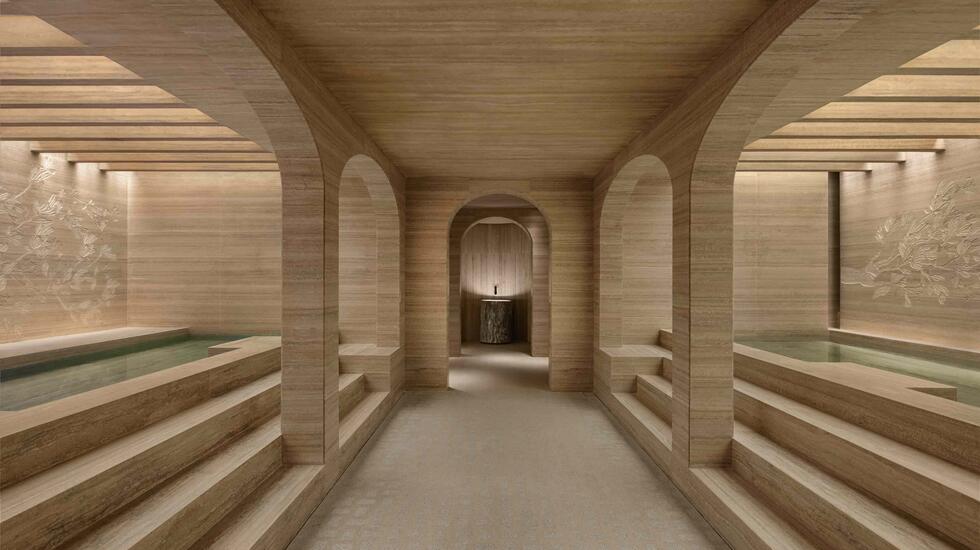
Palazzo
Salviati Cesi Mellini has been through many renovations
in its lifetime, but none as monumental as that which transmuted it
from a stolid bank building into a serene 96-room hotel and spa in
the heart of the Eternal City.
Opened in spring, Six Senses Rome is the first urban venture of
the luxury brand better known for its tranquil and tropical havens
of wellness. Occupying the site of a 1480s palace built for the
nephew of Pope Paul II, the hotel offers a holy grail in Rome: an oasis from the bustle of one of the city’s
main shopping strips, Via del Corso.
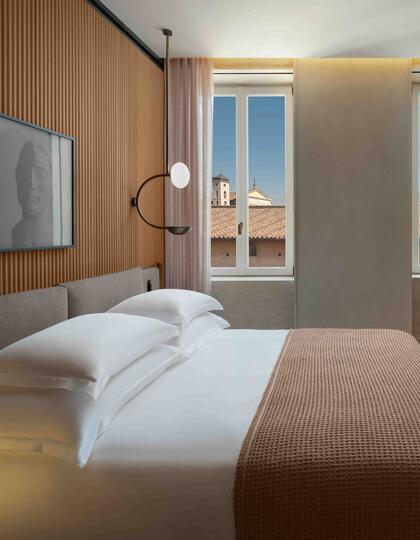
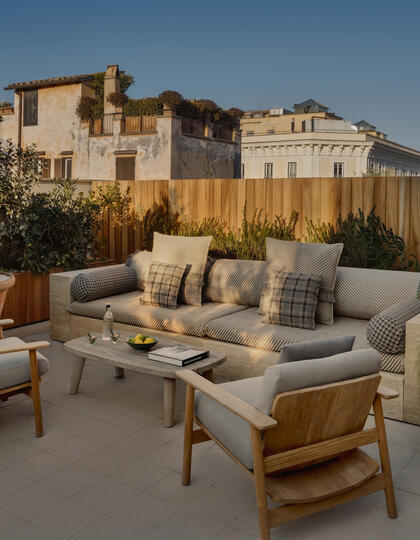
Stepping into the cool, marble-clad lobby is akin to taking a
minor Roman holiday within your Roman holiday, as a low-key hum
takes over from the honking traffic outside. An expanse of
travertine marble swirls underfoot, as the open-plan ground floor
stretches out, Tardis-like, before you. There are parlour palms and
soft seating in soothing Scandi tones, but also classically
inspired wall art of voluptuous writhing nudes in bas-relief – just
in case you forget you’re in Rome.
As it happens, Six Senses’ achievement here has been in making
both guests and locals feel as if they’re very much in the Italian
capital but experiencing the cool side of the city’s character
rather than the classic. Three years and millions of euros in the
making, the interiors involved employing the talents of Spanish
star designer Patricia Uriquiola while respecting Unesco-protected
parts of the property, such as the immense central staircase.
The renovation necessitated taking apart most of the
infrastructure, with much of the original building material being
repurposed in everything from the cocciopesto walls to the marble
used in the rightful star of the show – the contemporary-style
Roman baths.
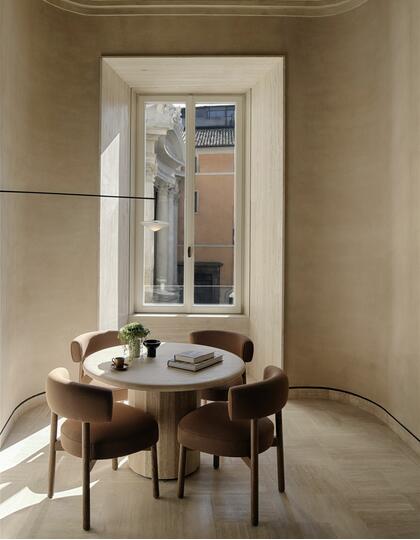
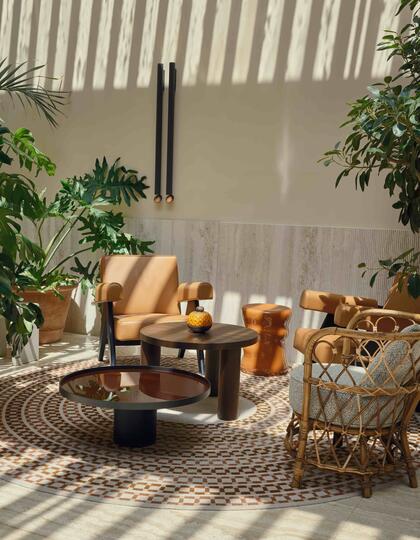
Six Senses Rome’s 96 rooms (including 28 suites) are decked out
in a modern neutral colour palette of greys, taupes and beige
punctuated by pot plants, oak panelling and soft wool rugs. Thanks
to top-notch soundproofing, the cocoon effect is so complete that
you might need to swing open the window and let the din drift up
from the streets below to remind yourself where you are. We loved
the abundant natural light, the generously stocked complimentary
minibar (with Opinel knife for precision lemon slicing), grey felt
slippers, and the inclusion of a yoga mat, plus the fact that
there’s plenty of space to get down with your metaphorical dog.
Unsurprisingly, it’s easy to eat healthily here. On the ground
floor, Bivium cafe-restaurant, an all-day dining space, offers a
broad-ranging buffet of fruits, grains, seeds, smoothies and
pastries. À la carte, you’ll find everything from brown bread with
cashew butter, roasted tomatoes and saffron butter to frittata with
pecorino, and overnight rice porridge. Alternatively, head to Notos
on the rooftop and sip your cappuccino amid terracotta pots of
herbs, taking in the skyline of Rome’s centro storico.
The kitchen is helmed by skilled Sicilian chef Nadia Frisina,
whose food leans to Roman-focused with contemporary flourishes, and
places a strong emphasis on seasonal, heritage and locally sourced
ingredients, supporting regional farmers and producers. “To
understand the future, I love to look at the past, following and
respecting the seasons,” she says. The Bivium dining concept
includes a sushi area, gelateria (where kids can trade wooden
tokens handed out at reception for gelato) and coffee bar – plus a
wine-tasting space with a vinous vending machine as a playful
touch. Plant-based options are abundant and excellent – as in a
delicate lunch of chickpeas and perfectly dressed salad leaves –
and fresh fish and seafood shine. The pizza is made with ancient
grains, and some of the best you’ll find in Rome.
The curved verde alpi marble bar is where the buzz starts to
build on Friday evenings, as groups of young Romans in jeans and
blazers, bike helmets slung over their elbows, crowd in for
expertly mixed aperitivi. The drinks are thoroughly international,
with a strong showing of G&Ts, bourbons and, as you’d expect in
Italy, bitters and vermouths. Don’t miss the inventive Roman
emperor-themed cocktail list: options include the Agrippa, made
from black Italian sake, vermouth, elderflower and bitters.
Spa and wellness facilities are integral at any Six Senses and
here is no exception. You’ll want to wallow away a couple of hours
in the Roman baths, which include caldarium, tepidarium and
frigidarium plunge pools (to be experienced in that order), and not
miss the immaculate sauna and steam rooms scented with botanicals.
There’s also a hammam with a private steam room, a well-equipped
fitness centre and alternative wellness experiences such as sound
bathing. Beauty treatments run the gamut from classic massages,
manicures and facials with an emphasis on natural ingredients to
the state-of-the-art, including biohacking techniques, which one of
the friendly, professional wellness team will guide you
through.
In line with the brand’s eco-principles, the Earth Lab on the
ground floor offers details about local sustainability and
community initiatives, as well as workshops where you might learn
to make your own beeswax food wraps or a salt-based body scrub.
The hotel also offers in-house masterclasses (pizza and
aperitivi making, for instance) and behind-the-scenes tours giving
guests exclusive access to parts of Rome generally inaccessible to
tourists.
In the running for LEED (Leadership in Energy and Environmental
Design) Gold certification, Six Senses Rome’s eco-cred is second to
none: the hotel even has its own sustainability curator, Federico
Catalioto.
Energy from the property comes from 100 per cent renewable
sources, low-energy lighting is used throughout and water and
lighting are centrally controlled for maximum efficiency. Econyl
fabric, made from waste materials, has been used in the curtains
and some sofas, oak panelling is FSC-certified, and more than half
of the menu is plant-based.
Every Six Senses property has a sustainability fund, drawn from
guest donations and 0.5 per cent of room rates, which is used to
bring value to the local community – in this case, to restore the
Unesco-listed facades of both the hotel and the much-loved historic
church, San Marcello al Corso, next door. As Catalioto notes:
“Sustainability in an urban environment, especially in a city like
Rome, is really about preserving the cultural and historical
heritage for future generations.”
The hotel entrance is step-free, there are four large lifts off
the lobby and rooms are wheelchair accessible. In addition, most of
the dining venues are at ground level.
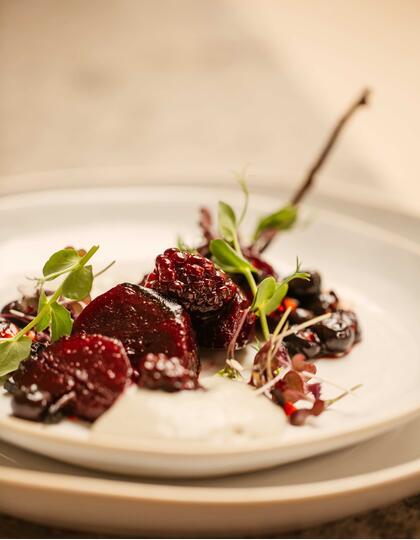
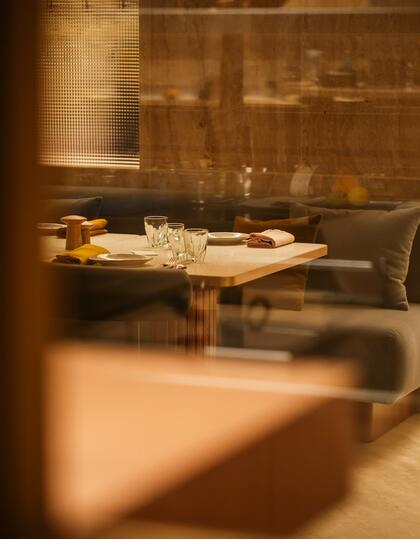
The well-heeled of all generations.
Shopping; the Trevi Fountain.
Led by dynamic general manager Francesca Tozzi (her sister
manages Soho House Rome), the team offers refreshingly informal and
friendly service. Ask one of them for a viewing of the ancient
Roman octagonal baptism font, tucked below floor level behind the
dining area.
